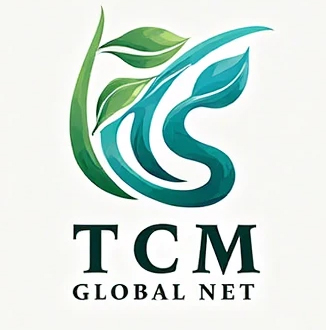In daily life, the issue of eating is always a focal point of people’s attention. In my clinical work, I often encounter patients who anxiously ask, “Doctor, if I can’t eat this or that, won’t my body lack nutrients?” This question reflects the public’s misunderstanding of the term “nutrition.”
I. Limitations of Modern Nutrition and the Holistic View of Traditional Chinese Medicine
Modern nutrition is built on the foundation of modern medicine, focusing on the study of material components.
In the system of modern nutrition, the main nutrients required by the human body are categorized into seven major classes, namely carbohydrates, fats, proteins, vitamins, minerals, water, and dietary fiber. Based on this, all foods are broken down into detailed nutritional component lists, and people supplement the corresponding nutrients according to their life stage by referring to these lists.
However, there is a serious flaw here: does food that enters the stomach necessarily get absorbed and utilized by the body? The process of life transformation is far from a simple “1+1=2,” which is precisely why many people seem to have a rich diet yet remain in a sub-healthy state.
1. The “Component Trap” of Modern Nutrition
- Misconceptions about the Seven Nutrients: Breaking down components like carbohydrates and fats may seem scientific, but it overlooks the overall transformation of food (such as the cold and damp nature of seafood damaging the spleen and stomach).
- The Truth about Absorption Rates: High-quality protein does not necessarily mean it is absorbed by the body; for those with weak spleen and stomach, eating shrimp might increase dampness (case: 35% of children in coastal cities have high allergy rates).
2. Modern Verification of Traditional Chinese Medicine’s “Spleen and Stomach as the Foundation of Acquired Life”
- Digestive and Absorption Mechanisms: The stomach receives food, and the spleen transforms it; the function of the spleen and stomach determines the efficiency of nutrient conversion (research shows: those with weak spleen and stomach have a vitamin utilization rate of less than 50%).
- Root of Sub-Health: Deficiency (deficiency of qi and blood) and blockage (stagnation of qi and blood) essentially result from an imbalance in spleen and stomach transformation. Both are fundamentally deficiencies, but their main contradictions differ. As the saying goes, “Flies don’t bite seamless eggs,” when we are in a sub-healthy state, we should reflect on our dietary structure and nutritional concepts.
II. The Wisdom of Natural Nutrition: The Life Code on the Tip of the Tongue
Let’s first explore what the feeling of nutrition is all about.
Does nutrition have a sensory difference? The answer is yes. For example, tasting vegetables and fruits grown at home in the countryside without pesticides, compared to similar products centrally purchased and delivered in the city, often have a more delicious flavor. Truly high-quality ingredients inherently possess delicious qualities, and with just a little seasoning, they can release a rich, fresh aroma. Vegetables grown in season and out-of-season vegetables also have significant differences in taste, much like instant coffee versus freshly ground coffee, with entirely different aromas and flavors that cannot replace each other.
From this, it is evident that the feeling of nutrition should be natural and pure, without the addition of artificial additives and other unnecessary components.
Observing nature, it is not difficult to find that many nutrient-rich foods have a strong aroma, attracting animals to eat them. Foods with a mild aroma usually have relatively fewer nutrients. Therefore, the most direct way to judge whether food is nutritious is to smell its aroma and taste its flavor.
Food is born between heaven and earth, naturally endowed with the energy of heaven and earth. The quality of dietary habits directly affects the types of diseases one might suffer from in the future, a point that cannot be ignored.
1. Three Characteristics of Natural Ingredients
| Characteristic | Examples of High-Quality Ingredients | Scientific Basis |
|---|---|---|
| Strong Aroma | Freshly ground coffee, free-range eggs | Volatile substances activate olfactory nerves |
| Rich Texture | Handmade bean paste, fermented tofu | Enzymatic reactions produce amino acids and small peptides |
| Seasonal Growth | Spring bamboo shoots, autumn pears | Photosynthesis accumulates secondary metabolites |
2. Dietary Misconceptions and Real Cases
- Misconception: “Eating shrimp supplements protein” → Truth: Shrimp is cold and can harm spleen yang, causing bloating and diarrhea in those with spleen deficiency.
- Case: Children in a coastal city with recurrent eczema; symptoms improved after stopping seafood and using Si Jun Zi Tang (Codonopsis + Atractylodes + Poria + Licorice).
In life, many people hold the belief that eating more shrimp can supplement high protein, and eating more sea cucumbers is said to nourish the kidneys; to help children grow taller, regular seafood feasts are arranged. Some even claim that a certain child grew tall and strong because they ate shrimp from a young age. However, there are two major misconceptions here that need our calm analysis.
First, is there a necessary causal relationship between a child’s height and eating shrimp in childhood? Many factors influence a child’s height, including genetic height from parents, regular exercise, timely clothing adjustments to prevent illness, maintaining a regular sleep schedule, and not staying up late, all of which can affect a child’s height.
Claims that eating seafood can make one grow taller are like cosmetics companies using models with good skin to promote product efficacy; they seem related but may not have a direct connection, and we should not be misled by the “seeing is believing” illusion.
Second, modern medicine and nutrition analyze nutrients from a material perspective, and the mindset of “eating something will definitely be absorbed” has significant problems. The mechanism of life transformation is complex and subtle, far from a simple accumulation of materials. If it were so, wouldn’t children from wealthy families and those in coastal cities who regularly eat seafood be far ahead in height?
The process of life transformation seems mysterious but contains profound truths.
The famous physician Guan Qingwei once gave a vivid example: fish caught from the sea are fresh and delicious, but fish pickled in saltwater become salty and astringent. Even though both are immersed in a salty environment, why is the taste of the fish so different? This is the wonder of life transformation, which is not a simple addition of material components.

III. Traditional Chinese Medicine’s Differential Treatment Plan
☆☆☆The spleen and stomach are the foundation of all nutrient absorption☆☆☆
Traditional Chinese medicine, as the study of living people, fundamentally reveals the importance of the spleen and stomach as the foundation of acquired life. Only when the spleen and stomach function strongly and can properly absorb and digest food, can whatever is eaten be transformed into nutrients that nourish the body; conversely, if the spleen and stomach are weak and have poor absorption and digestion capabilities, even the most expensive and nutrient-rich foods will be difficult for the body to absorb, leaving it in a weak state.
☆☆☆Most children with allergic constitutions have weak spleen and stomach☆☆☆
Nowadays, many children are born with allergic constitutions, unable to normally absorb breast milk or regular milk, and must switch to hydrolyzed formula, or even deeply hydrolyzed formula, yet they are still prone to recurrent allergies. The reason lies in the spleen and stomach function not returning to normal, leading to ineffective food absorption and various adverse reactions.
Returning to the issues of “eating seafood and shrimp to supplement high protein” and “supplementing high protein to grow taller,” when we understand that the spleen and stomach are key to nutrient absorption, we realize that it is not necessary to supplement nutrients through these foods. Moreover, seafood is generally cold in nature, and its growth in water gives it a heavy dampness. For those with spleen and stomach yang deficiency, even occasional consumption of seafood requires a long time for the body to recover. Many pregnant women who frequently eat seafood give birth to children with allergic constitutions because seafood damages the child’s yang energy.
Some adults develop urticaria after eating seafood, which is just a visible problem; in fact, the potential adverse effects of seafood on the body may be more extensive.
☆☆☆Spleen and Stomach Regulation Plan☆☆☆
1. Spleen and Stomach Deficiency Type
- Tongue Appearance: Pale and swollen tongue, teeth marks on the sides, white and greasy coating.
- Regulation Plan:
- Dietary Therapy: Si Shen Tang (Poria 15g + Chinese Yam 20g + Lotus Seed 10g + Gorgon Fruit 10g) stewed with spare ribs.
- Chinese Patent Medicine: Shen Ling Bai Zhu San (twice daily, 6g each time).
2. Qi and Blood Deficiency Type
- Tongue Appearance: Pale red tongue, depressions on the tip, weak pulse.
- Regulation Plan:
- Medicinal Diet: Dang Gui Sheng Jiang Yang Rou Tang (Angelica 10g + Fresh Ginger 5 slices + Lamb 200g).
- Acupressure: Zusanli point (3 inches below the knee) massage for 3 minutes daily.
3. Damp-Heat Stagnation Type
- Tongue Appearance: Red tongue, yellow and greasy coating, tortuous sublingual veins.
- Regulation Plan:
- External Treatment: San Ren Tang (Almond 10g + Cardamom 6g + Job’s Tears 30g) boiled in water for foot soaking.
- Tea Substitute: Lotus Leaf 3g + Cassia Seed 5g steeped in boiling water.
☆☆☆Do Not Follow the “Component Theory” Only☆☆☆
The “Component Theory” is prevalent in today’s society, driven by market economy factors.
Merchants, in order to sell their products, will inevitably seek various theoretical bases to prove the necessity of their products. Those selling seafood will promote the nutritional value of seafood, while those selling fruits and fruit drinks will emphasize the importance of vitamin supplementation.
However, few inform the public that the human body inherently possesses a strong self-regulatory ability; people often do not understand their body’s weaknesses and have not considered methods to restore bodily functions.
IV. Practical Guide to Family Health Preservation
1. Regulation of Children’s Allergic Constitution
- Dietary Taboos: Avoid seafood, mango, and other allergenic foods before the age of 1.
- Dietary Therapy Alternatives: Deeply hydrolyzed formula + millet porridge oil (to repair intestinal mucosa).
2. Reversing Sub-Health in Office Workers
- Office Tea: Rose 3g + Tangerine Peel 2g + Goji Berries 5g, to soothe the liver and relieve depression.
- Work Break Exercise: Ba Duan Jin “Regulating the Spleen and Stomach Must Raise One Arm,” 3 sets daily.
3. Key Points of Seasonal Health Preservation
- Spring Equinox: Soothe the liver and strengthen the spleen (stir-fried toona sinensis with eggs + shepherd’s purse and tofu soup).
- Autumn Equinox: Nourish yin and moisten dryness (tremella and lily soup + almond dew).


Leave a Reply